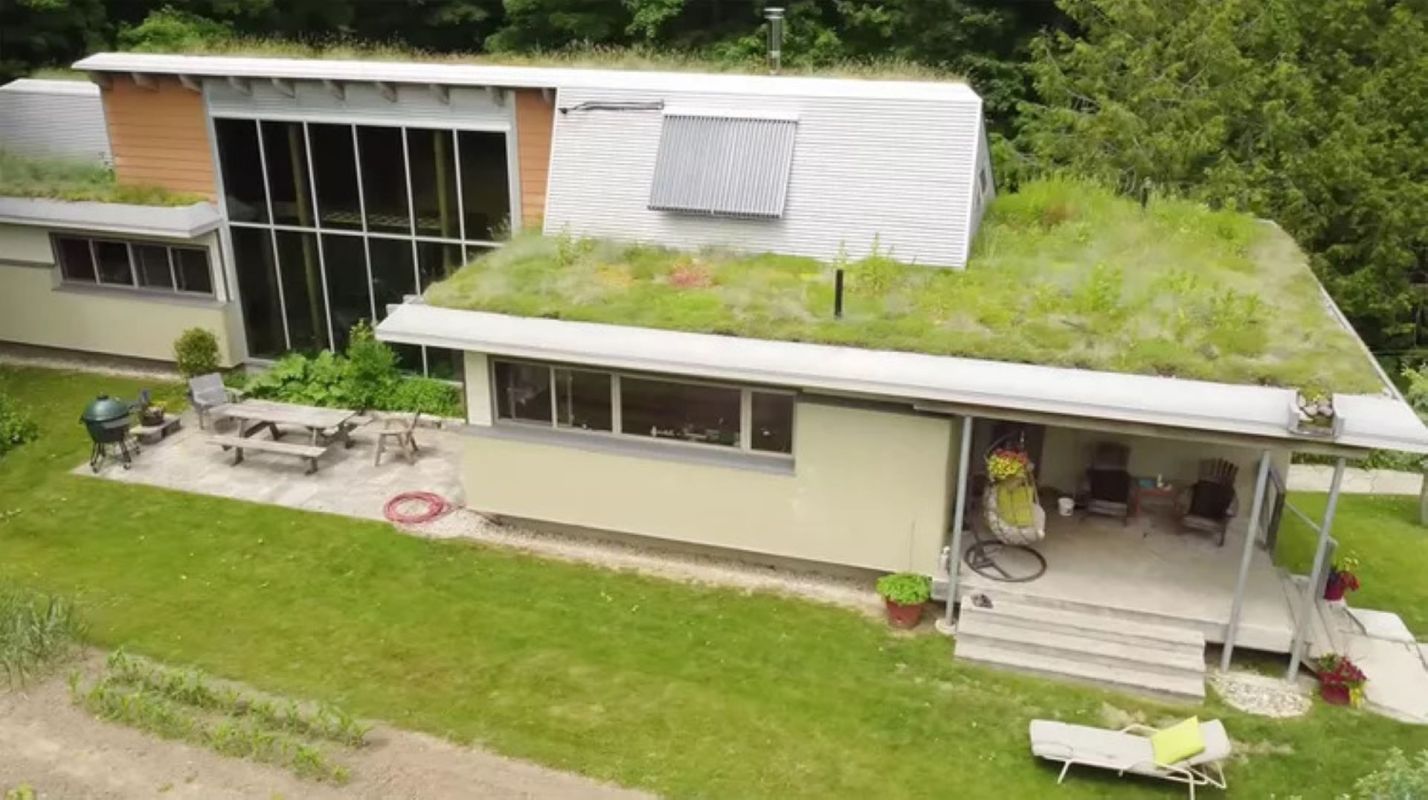Sometimes the most eco-friendly options are the most simple. One Canadian family has used low-tech building techniques to construct their dream home in Ontario.
While many of us think of cars being a main source of heat-trapping gases, our buildings can cause just as much harm to the environment. About 40% of all carbon pollution comes from buildings, either in their construction or daily use. The materials used in construction, like concrete, can also be detrimental to the environment.
Because of the massive impact of buildings, some families choose more eco-friendly techniques to live in harmony with nature. Chris Vander Hout and Christine Hoy and their son did so, living completely off the grid in their Ontario home.
The family has been living on the property for more than 18 years, and recently they commissioned a sustainable straw bale home from Toronto architect Martin Liefhebber. Their priority was that they "wanted a healthy home."
Vander Hout and Hoy chose a clearing on the property to reduce the need to cut down trees or destroy native habitats.
The house uses many sustainable building techniques, like a green roof and local materials. The solar water heater, solar panels, rainwater harvesting system, and composting toilet all help the family live off the grid. With these renewable tactics, Vander Hout and Hoy can avoid relying on dirty energy sources — like coal, oil, and gas — and energy-intensive practices.
One of the standout features of the house is the straw bale wall system, a technique of building with straw bales and covering them with plaster. This helps insulate the house using natural, locally sourced materials.
When seen from above, the brilliant green roof showcases drought-resistant plants, which help reduce runoff and insulate the home.
The green roof, straw bale walls, and a careful design to maximize passive solar gain mean the house does not need air conditioning or artificial heating to keep the interior temperatures comfortable. These methods are not high-tech, as humans have used these techniques for millennia.
The sustainable design is helping the family reduce their water and dirty energy usage. Aspiring off-the-grid homeowners can take inspiration from Vander Hout and Hoy, choosing some or all their techniques to reduce their impact and be kinder to the planet.
Vander Hout now owns a sustainable home construction company, which allows him to help others build with these techniques. He encourages others to look into green-building techniques, like Passive House.
Vander Hout reflected, "To live off the land is work but it is a labor of love and has you involved in the cycle of life … It doesn't feel like a burden at all, it feels normal."
Join our free newsletter for easy tips to save more, waste less, and help yourself while helping the planet.









